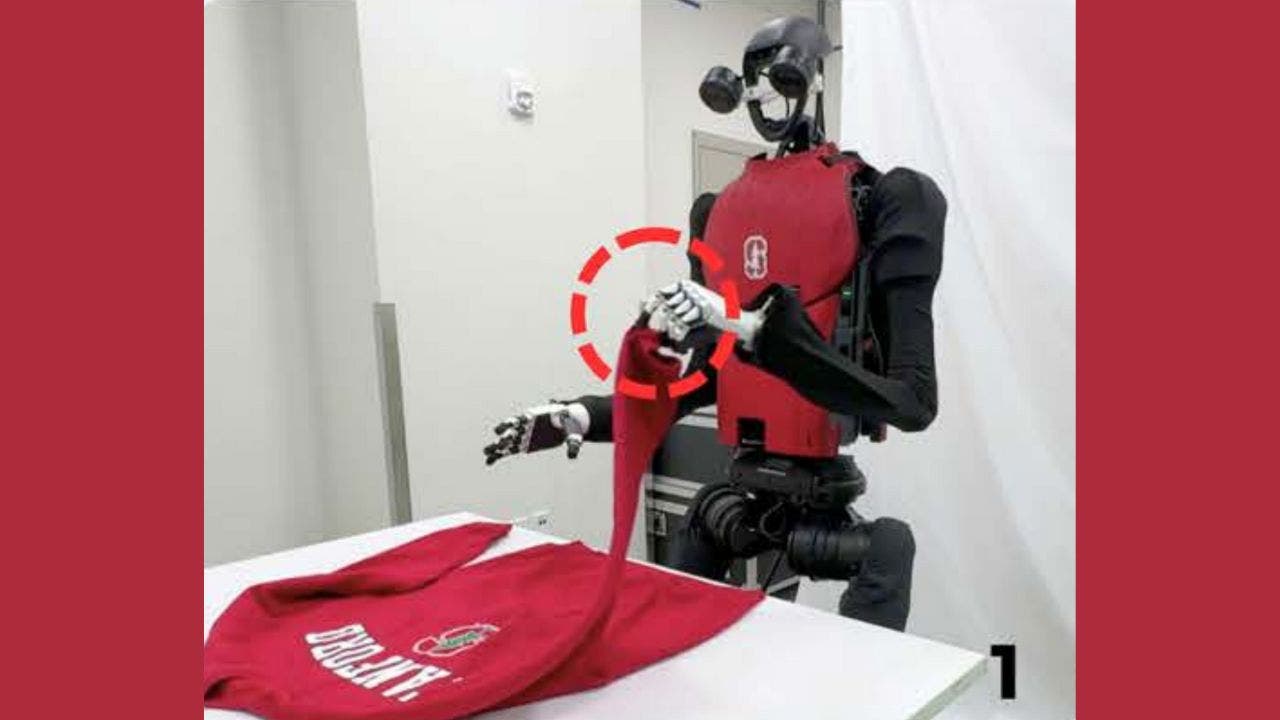Technology
HumanPlus robot can go from playing piano to ping-pong to boxing

Researchers at Stanford University have created an innovative humanoid robot called “HumanPlus” that can learn and perform a wide range of tasks by observing human actions. This breakthrough in robotics brings us one step closer to developing truly versatile and adaptable machines.
GET SECURITY ALERTS, EXPERT TIPS – SIGN UP FOR KURT’S NEWSLETTER – THE CYBERGUY REPORT HERE
HumanPlus humanoid robot playing ping-pong (Stanford University) (Kurt “CyberGuy” Knutsson)
Technical specifications
Built on Unitree’s H1 robot base, with hands from Inspire-Robots and custom wrists, HumanPlus stands 5 feet 9 inches tall. It features a 6-DoF (degrees of freedom) hand, which includes one degree of freedom for each of the index, middle, ring and little fingers, plus two degrees of freedom for the thumb. This configuration allows for complex hand movements and manipulations.
The robot also has a 1-DoF wrist, which means it can rotate in one plane, likely allowing for up and down or side-to-side movement, calculated using the relative rotation between the forearm and hand global orientations.

HumanPlus humanoid robot (Stanford University) (Kurt “CyberGuy” Knutsson)
It features 33 degrees of freedom, two RGB webcams mounted on its head, a finger force capacity of up to 10N, an arm payload of up to 16.5 pounds and leg motor torque of up to 360Nm.
N stands for Newtons, which is the standard unit of force. 10N means the robot’s fingers can exert a force of up to 10 Newtons. This is equivalent to about 2.25 pounds-force, indicating the gripping strength of the robot’s fingers.
Nm stands for Newton meters, the standard unit for torque. 360Nm means the motors in the robot’s legs can generate a rotational force of up to 360 Newton meters. This is a significant amount of torque, indicating powerful leg motors capable of performing tasks that require substantial force and movement.
These specifications give us an idea of the robot’s grip strength and leg power capabilities, which are crucial for various tasks like manipulation and locomotion.
AMAZON PRIME DAY IS HERE: KURT’S BEST AMAZON PRIME DAY 2024 DEALS
HumanPlus humanoid robot folding clothes (Stanford University) (Kurt “CyberGuy” Knutsson)
CHINA UNVEILS ITS FIRST FULL-SIZE ELECTRIC RUNNING HUMANOID ROBOT
Learning through observation
HumanPlus utilizes a single RGB camera and a whole-body policy to clone human motion in real time. The robot can learn various activities, including boxing, playing the piano, ping-pong, tossing objects and typing.
HumanPlus humanoid robot boxing (Stanford University) (Kurt “CyberGuy” Knutsson)
The system requires approximately 40 hours of human movement data to learn a task and then reproduce it step by step.
HumanPlus humanoid robot playing the piano (Stanford University) (Kurt “CyberGuy” Knutsson)
HOW TO REMOVE YOUR PRIVATE DATA FROM THE INTERNET
Impressive task performance
HumanPlus has also demonstrated remarkable capabilities in various tasks, including wearing shoes and walking, unloading objects from warehouse racks, folding clothes, rearranging objects, typing and greeting another robot. The robot achieved success rates of 60%-100% in these tasks using up to 40 demonstrations.
HumanPlus humanoid robot wearing and walking in shoes (Stanford University) (Kurt “CyberGuy” Knutsson)
HERE’S WHAT RUTHLESS HACKERS STOLE FROM 110 MILLION AT&T CUSTOMERS
Cost considerations
While HumanPlus represents a significant advancement in humanoid robotics, it comes with a substantial price tag. The researchers estimate the cost of building a working model at approximately $107,945. However, given its versatility, it may still be one of the more cost-effective options currently available on the market.
HumanPlus humanoid robot folding clothes (Stanford University) (Kurt “CyberGuy” Knutsson)
Open-source design
One of the most notable aspects of HumanPlus is its open-source design. The researchers have released a GitHub repository, allowing others to build similar models and contribute to its development.
HumanPlus humanoid robot unloading objects from warehouse racks (Stanford University) (Kurt “CyberGuy” Knutsson)
Kurt’s key takeaways
HumanPlus’s ability to learn from human demonstrations and perform a wide range of tasks showcases the potential for more adaptable and versatile robots in the future. The open-source nature of the project encourages collaboration and further development, which could accelerate progress in this field.
As humanoid robots continue to evolve and improve, we may see them playing increasingly important roles in various industries, from manufacturing and healthcare to entertainment and education. While the current cost of HumanPlus may limit its immediate widespread adoption, ongoing research and development could lead to more affordable versions in the future, potentially revolutionizing how we interact with and utilize robotic assistants in our daily lives.
What everyday task or skill would you most like to see HumanPlus learn and perform and why? Let us know by writing us at Cyberguy.com/Contact.
For more of my tech tips and security alerts, subscribe to my free CyberGuy Report Newsletter by heading to Cyberguy.com/Newsletter.
Ask Kurt a question or let us know what stories you’d like us to cover.
Follow Kurt on his social channels:
Answers to the most asked CyberGuy questions:
Copyright 2024 CyberGuy.com. All rights reserved.